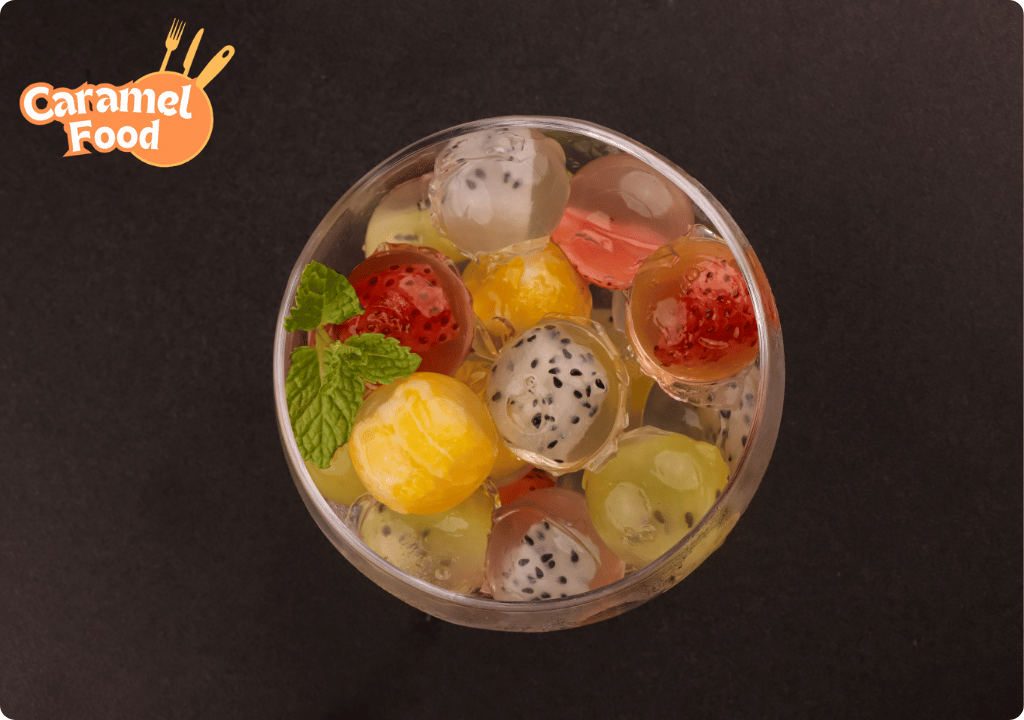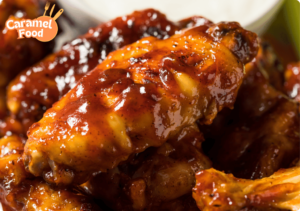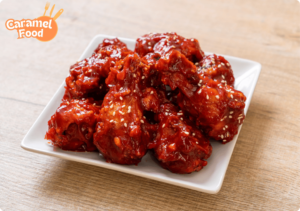Asian desserts are a world of flavors waiting to be explored. They offer a unique blend of tastes and textures that are distinct from Western sweets.
One key ingredient that often features in these treats is caramel. It adds a rich, sweet depth that complements the other flavors perfectly.
But Asian desserts are more than just a delight for the taste buds. They also hold cultural significance in many Asian countries, marking special occasions and festivals.
In this guide, we’ll delve into the world of Asian desserts. We’ll highlight the best ones and focus on those that feature caramel.
Whether you’re a food enthusiast, a home cook, or just someone with a sweet tooth, this guide will help you discover new favorites. So, let’s embark on this sweet journey together.
The Sweet Diversity of Asian Desserts
Asian desserts showcase an incredible variety. Each region offers its own unique take on sweet treats, influenced by local ingredients and traditions. From the chewy mochi of Japan to the creamy halo-halo of the Philippines, the options are endless.
Dessert textures in Asia are just as diverse as their flavors. Some desserts are chewy, others jelly-like, while some are silky smooth. This contrast is a vital element in Asian desserts, creating an unforgettable tasting experience.
Many Asian desserts incorporate fruits, adding natural sweetness and flavor. Tropical delights like mango, coconut, and banana are common, lending their flavors to delightful concoctions. With an abundance of fruits available, the possibilities for creating new desserts are vast.
Equally important is the balance of sweet, salty, and sometimes even savory notes. Asian desserts often aim to create harmony between these flavors, resulting in a balanced and nuanced taste. The use of spices like ginger and cinnamon adds depth to many recipes.
Traditional Asian sweets have a long history and cultural significance. They often symbolize good fortune and celebration. These desserts are cherished, with recipes passed down through generations, preserving the rich culinary heritage of each region.
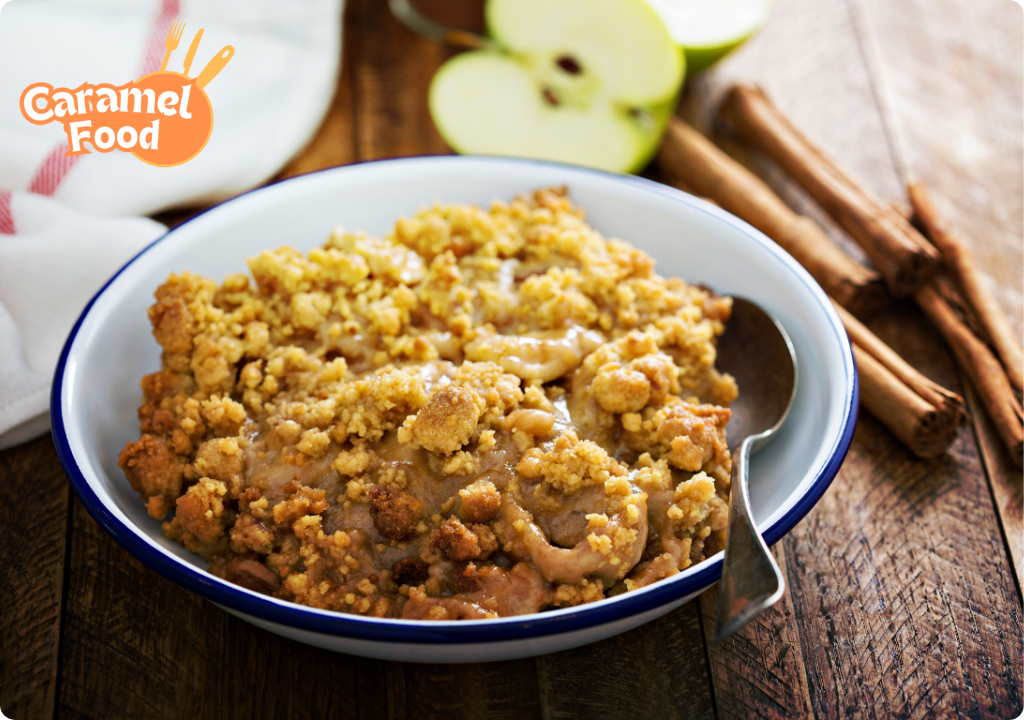
Why Asian Desserts Stand Out
Asian desserts are distinct from Western sweets in many ways. They emphasize subtle and nuanced flavors instead of heavy sweetness. This approach makes them refreshingly light and intriguing.
The use of uncommon ingredients also contributes to their uniqueness. Think of red bean paste, sesame seeds, and glutinous rice, which are less familiar to Western palates.
Presentation plays a crucial role in Asian dessert culture. Desserts are often visually stunning, with vibrant colors and intricate designs. The artistry in appearance enhances the overall experience, making these desserts truly memorable.
The Role of Caramel in Asian Sweets
Caramel brings a sweet richness to many Asian desserts. Its deep, burnt sugar flavor adds an extra layer of complexity to these treats. From silky puddings to crispy pastries, caramel has a cherished place in these confections.
Some popular Asian desserts highlight caramel as a star ingredient. For example, Vietnamese bánh flan and Thai caramel coconut custard showcase this delicious element. These treats balance caramel’s sweetness with other flavors, creating a delightful harmony.
Making caramel requires precision and patience. It’s all about timing the sugar’s transformation perfectly. In Asian cuisine, this skill is honed to create desserts that are both delicious and visually appealing.
Caramel’s versatility allows it to be used in various dessert forms, from sauces and syrups to fillings and toppings. This adaptability enriches the landscape of Asian desserts, adding a touch of warmth and indulgence.
Incorporating caramel into a dessert is like adding a touch of magic. Its presence can elevate a simple treat into a sophisticated delight, full of flavor and texture. The art lies in achieving the right balance, ensuring caramel complements rather than overwhelms.
Cultural Significance of Asian Desserts
Asian desserts carry profound cultural importance, representing more than mere sweet treats. They are embedded in traditions, often playing pivotal roles in festivities and ceremonies. Desserts are an expression of heritage, offering insights into a region’s history and values.
In many Asian cultures, desserts symbolize various concepts like luck, happiness, and prosperity. For instance, during Lunar New Year, sweet rice cakes are shared to bring good fortune. These desserts are not just consumed; they are shared and cherished, strengthening familial and social bonds.
The preparation and sharing of traditional desserts often follow specific customs. This process is a meaningful activity, steeped in symbolism. Such practices preserve the culinary arts and promote community bonding, enriching cultural traditions.
Desserts Across Asia: A Cultural Journey
Embarking on a cultural journey through Asian desserts reveals fascinating stories. Each dessert tells a tale of its origin and cultural backdrop. For example, Japanese wagashi reflects the Zen philosophy of simplicity and natural beauty. Its minimalist design speaks volumes.
Chinese mooncakes are more than just delicious pastries. They carry historical significance, associated with the Mid-Autumn Festival. These treats symbolize unity and family harmony, celebrated under the full moon’s glow.
Indian sweets, or mithai, are an integral part of religious festivals and celebrations. They are often presented as offerings, reflecting spiritual devotion and cultural richness. Each sweet is vibrant and full of flavor, representing the diversity of Indian culture.
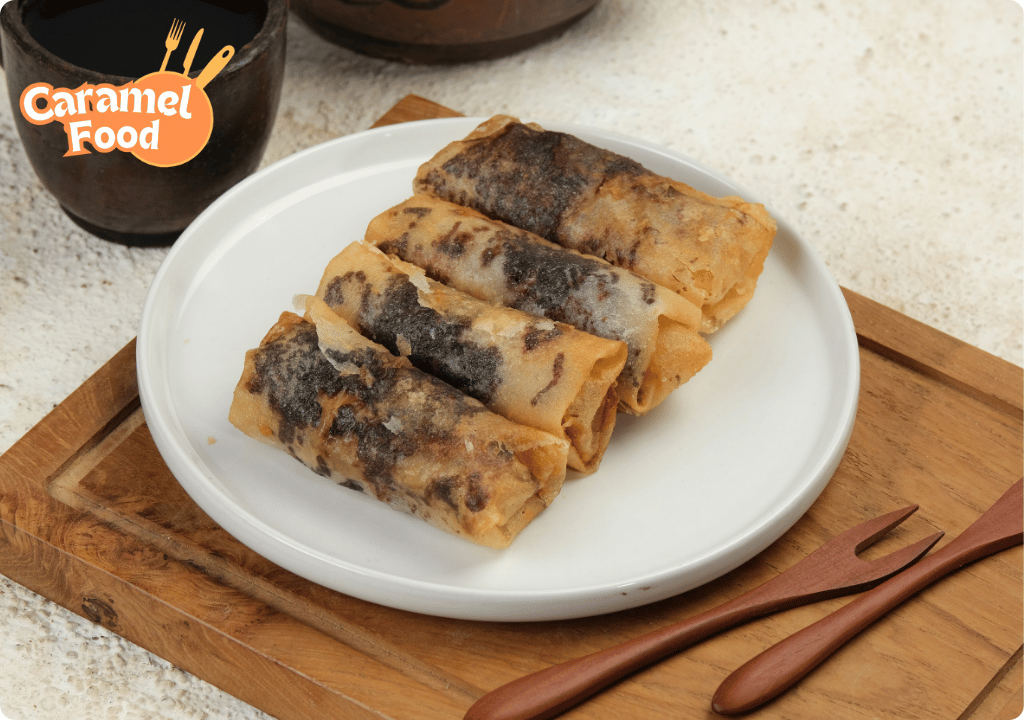
Festive and Seasonal Asian Desserts
Asian festivals are incomplete without special desserts that capture the essence of the occasion. Seasonal ingredients are essential, influencing the flavors and appearances of these treats. Celebrations become even more joyous with these sweet delights.
During the spring, cherry blossom-infused sweets mark the season’s arrival in Japan. They highlight the fleeting beauty of cherry blossoms, a symbol of renewal. These desserts are light and delicately flavored, capturing the spirit of the season.
The icy delights of halo-halo are popular in the Philippines during summer. This layered dessert, loaded with fruits, jellies, and sweet beans, is the perfect remedy for the tropical heat. It is a refreshing symbol of the vibrant Philippine culture, celebrating the abundance of local produce.
In Malaysia, traditional cakes called kuih are prominent during festive times. These sweets are colorful and feature ingredients like pandan and coconut. They bring joyous flavors to festivals, representing the rich cultural tapestry of Malaysia.
The Best Asian Caramel Desserts to Try
Asian caramel desserts are an indulgent treat that combines the rich, smooth texture of caramel with traditional ingredients. These desserts are a must-try for anyone with a sweet tooth. They offer a unique blend of Asian flavors and caramel sweetness.
Asian caramel desserts provide a delightful sensory experience. With diverse textures and flavors, they cater to different palates and preferences. From creamy to crunchy, there’s something for everyone in the world of Asian desserts featuring caramel.
Here are some standout Asian caramel desserts to explore:
- Thai Caramelized Bananas: A simple yet flavorful treat with caramel sauce drizzled over ripe bananas.
- Vietnamese Flan (Bánh Flan): A creamy, egg-based custard with a layer of caramel on top.
- Japanese Caramel Mochi: Sweet mochi with a smooth caramel filling inside for a delightful surprise.
- Chinese Caramel Custard Tarts: Pastry shells filled with a luscious caramel custard, a favorite at dim sum.
- Indonesian Klepon: Glutinous rice balls filled with melted caramelized palm sugar and rolled in coconut.
These desserts highlight the versatility of caramel in Asian cuisine. They merge traditional flavors with the decadent sweetness of caramel. Whether enjoyed at a street market or homemade, these treats never fail to impress.
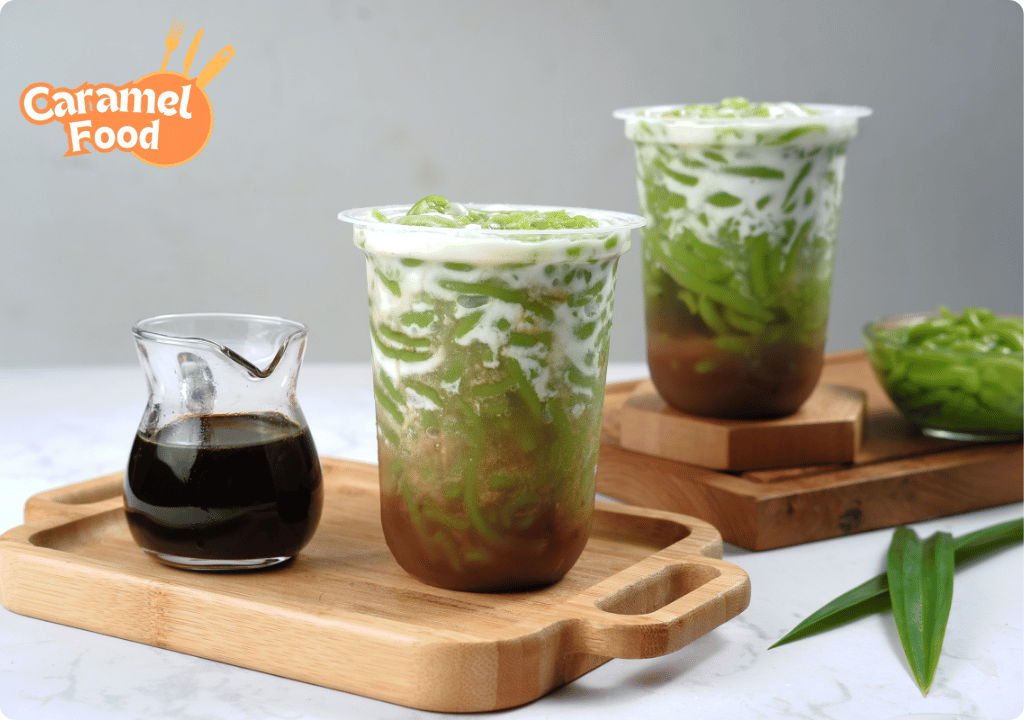
Popular Asian Desserts Featuring Caramel
A standout among Asian desserts with caramel is the Vietnamese flan, also known as bánh flan. It is reminiscent of the classic French crème caramel but with a unique Southeast Asian twist. The flan is silky smooth and delicately flavored with caramelized sugar.
Japanese caramel mochi takes center stage with its delightful chewiness. The caramel filling surprises and delights with each bite. This dessert showcases the harmonious blend of traditional mochi and modern caramel flavors.
Thai caramelized bananas offer a straightforward yet mouth-watering treat. The ripe bananas cooked in caramel sauce are tender and rich in flavor. This dessert strikes a perfect balance between sweetness and natural fruit flavors.
A beloved dim sum dessert is Chinese caramel custard tarts. These tarts feature crispy pastry crusts filled with creamy caramel custard. The contrasting textures of the crust and filling create a heavenly dessert experience.
Making Caramel the Asian Way
Creating caramel for Asian desserts involves both traditional techniques and modern twists. Asian methods emphasize achieving a delicate balance of sweetness and depth. The process often includes coconut milk or palm sugar for distinctive flavors.
To begin, start with a clean, heavy-bottomed pan. This ensures even heating, crucial for perfect caramel. Add sugar and gently heat until it melts and turns golden brown. Stir sparingly to avoid crystallization.
Incorporate ingredients like coconut milk or palm sugar to enhance flavor. These additions not only deepen the caramel’s taste but also add an authentic touch. Achieving the right consistency is key; it should be smooth yet slightly thick.
Mastering this simple yet rewarding process enhances various desserts. Whether drizzling over fruits or infusing into custards, homemade caramel elevates Asian sweets. This fusion of flavors and techniques guarantees a delightful dessert experience.
Easy Asian Desserts for Home Cooks
Creating Asian desserts at home may seem daunting, but many recipes are surprisingly simple. Home cooks can easily replicate these sweet treats with the right guidance. The use of readily available ingredients and straightforward steps makes these desserts accessible to everyone.
Asian desserts often feature ingredients like coconut milk, rice flour, and sweetened condensed milk. These staple items are found in most grocery stores, simplifying the shopping list. Flavorful spices and fresh fruits add layers of flavor and color.
For those seeking a sweet adventure in the kitchen, try these easy Asian desserts:
- Mango Sticky Rice: A classic Thai dessert with sticky rice, coconut milk, and ripe mango slices.
- Sesame Seed Balls (Jian Dui): Chewy rice flour balls filled with sweet bean paste, rolled in sesame seeds.
- Japanese Castella Cake: A soft, honey-flavored sponge cake with origins in Portuguese baking.
- Coconut Agar Jelly: A refreshing, jiggly dessert made from coconut milk and agar-agar, perfect for summer.
Preparing these desserts not only satisfies sweet cravings but also introduces new techniques. Asian desserts emphasize balance, combining sweet, salty, and creamy elements. The simple procedures highlight the natural flavors of each ingredient.
Step-by-Step Recipes for Asian Caramel Desserts
Delve into the sweet world of Asian caramel desserts with our detailed recipes. First, Thai Caramelized Bananas. Begin by slicing ripe bananas and preparing a thick caramel sauce. In a pan, melt sugar until it turns golden, then add coconut milk and a pinch of salt. Pour this luscious caramel over bananas for a delightful treat.
Next, Vietnamese Flan. This custard dessert requires eggs, condensed milk, and vanilla. Prepare a caramel base by melting sugar directly in the ramekins. Mix eggs, milk, and vanilla, then pour over the caramel layer. Steam or bake until set for a smooth, flavorful dessert.
Japanese Caramel Mochi combines chewy mochi with a soft caramel center. Make mochi dough with glutinous rice flour, sugar, and water. Roll out and fill with homemade caramel, then seal and steam until the mochi texture turns sticky and soft.
For Indonesian Klepon, use glutinous rice flour to form balls, filling them with caramelized palm sugar. Boil these in water until they float, then roll in grated coconut. The caramel surprise inside makes these sweets utterly addictive.
Finally, try Chinese Caramel Custard Tarts. Line pastry shells with caramel, then fill with custard mixture. Bake until the custard sets with a gentle jiggle in the center. The combination of crisp pastry and smooth custard is irresistible.
Tips for Perfect Asian Desserts at Home
Creating Asian desserts at home requires a bit of patience and practice. Focus on flavor balance, combining sweet, salty, and creamy ingredients for depth. Start with quality ingredients for the best results.
Texture is a vital component in Asian sweets. Be it chewy, silky, or crispy, achieving the right texture elevates the dessert. Pay close attention to cooking times and temperatures for optimal results.
Lastly, embrace creativity in your dessert presentations. Asian desserts often feature vibrant colors and elegant garnishes. Incorporate edible flowers or fresh fruits to add both flavor and visual appeal to your creations.
The Future of Asian Desserts
The future of Asian desserts is full of promise. As global interest in diverse flavors continues to grow, these sweet treats are gaining recognition. Chefs worldwide are exploring Asian ingredients and traditional techniques, ensuring these desserts stay relevant.
Innovation is at the forefront of this evolution, with modern twists on beloved classics. By integrating contemporary flavors and presentation methods, Asian desserts are appealing to a broader audience. This fusion of old and new creates exciting possibilities for dessert enthusiasts.
Cultural exchange plays a crucial role in this development. As people travel and share culinary experiences, Asian desserts become part of the global taste palette. This exchange nurtures an appreciation for the depth and variety present in Asian dessert culture.
Asian Desserts in the Global Culinary Scene
Asian desserts are firmly establishing themselves in the global culinary scene. Their unique flavors and textures captivate audiences worldwide, offering something different from traditional Western sweets. From high-end restaurants to local cafes, these desserts are making their mark.
In recent years, Asian desserts have gained popularity across continents. Bubble tea shops, mochi, and matcha-flavored treats are booming in Western markets. The demand for unique, Instagram-worthy sweets draws attention to these traditional treats.
The global reception is a testament to their universal appeal. As more people enjoy these sweets, chefs gain new opportunities to experiment with flavors. Asian desserts are no longer confined by geographic boundaries, inviting culinary enthusiasts to explore further.
Trends and Innovations in Asian Sweets
Trends in Asian sweets continue to evolve with surprising innovations. Fusion desserts are on the rise, marrying traditional flavors with modern techniques. This results in creations that excite the palate and challenge conventional expectations.
Vegan and plant-based options are also gaining traction. As dietary preferences shift, there is a growing demand for desserts catering to specific needs. Asian sweets, often using plant ingredients, adapt well to these changes.
Moreover, technology is influencing dessert development, allowing for precise cooking methods and creative presentations. This includes using 3D printing for intricate designs and developing new techniques to enhance flavor intensity. As these trends shape the future, the landscape of Asian desserts promises to be as vibrant as ever.
Conclusion: The Endless Delights of Asian Desserts
Asian desserts offer a treasure trove of flavors and textures. These sweets capture the essence of diverse cultures and traditions, making them timelessly appealing. From soothing sweet soups to intricate caramel delights, there’s something for everyone.
As appreciation for these desserts spreads across the world, we see more innovations and adaptations. Embracing both tradition and novelty, Asian desserts promise a delightful journey for taste buds everywhere. Whether you’re discovering them for the first time or looking to explore further, the endless delights of Asian sweets await.
FAQs About Asian Desserts
What makes Asian desserts unique?
Asian desserts are known for their diverse ingredients and flavors. They often balance sweetness with salty or umami notes. Unique textures like chewiness and jelly-like consistencies set them apart from Western sweets.
Are Asian desserts healthy?
Many Asian desserts use natural ingredients like fruits and beans. Some emphasize moderation in sweetness. While not inherently healthier, certain desserts can be lower in sugar and fat than Western options.
What ingredients are common in Asian sweets?
Common ingredients include rice, coconut milk, and green tea. You’ll also find beans, sesame, and tropical fruits in various desserts. These components lend distinct tastes and textures to Asian sweets.
How can I make easy Asian desserts at home?
Starting with recipes that require minimal steps or specialized ingredients is best. Consider trying mango sticky rice or mochi, which are beginner-friendly. Experimenting with simple versions of more complex desserts can also be fun.
- Unique flavors: sweet, salty, and umami
- Health-conscious options: less sugar, natural ingredients
- Common ingredients: rice, coconut, beans
- Easy recipes to try: mango sticky rice, mochi
Exploring the world of Asian desserts provides endless opportunities for creativity and satisfaction. With readily available ingredients and simple techniques, even novice cooks can enjoy these delightful treats.
